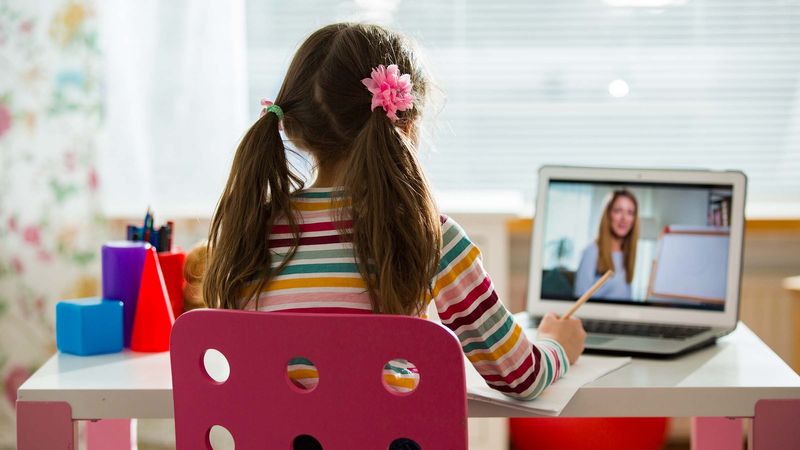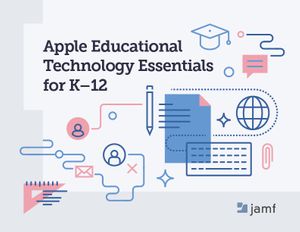COVID-19 has presented unique hurdles for everyone globally — the education sector included. As we progress through the pandemic, schools are adapting and discovering what works (as well as opportunities for improvement) in an effort to refine their learning strategy. As educational technology continues to provide more solutions it begs the question, “Is now the time for an education reset?”.
To discuss the role educational technology has played in the last few months and what the future could have in store, we welcomed the following speakers:
- Craig Smith, Senior Education Manager, UK & Ireland at Jamf
- Aaron Webb, Senior Education Marketing Specialist at Jamf
- Catherine Thomas, Head Teacher at Holy Trinity Primary School
- Abdul Chohan, VP of Learning at Showbie
- Jenny Dunne, Executive Director of Learning at New Bridge MAT
- Andrew Jewell, Director at Andrew Jewell Ltd
Want to watch the EdTechX Jamf Spotlight on demand? Don’t miss the full video of the session on this page.
Navigating the pandemic
Countless schools and educational institutions have had similar struggles adapting to new teaching and learning environments over the past year, with a majority of teachers agreeing that without rapid innovations in technology, continuing to educate our students around the globe would be impossible.
Without 1-to-1 programs already established, some institutions found themselves forced to find a way to provide their students with the necessary tools for at-home or hybrid learning and one main barrier that the pandemic presented for teachers was the added stress of pivoting to new tools and technology. When enrolling iPads means connecting each one to a single computer and setting them all up individually, this can also pose major issues for efficiently getting devices into the hands of students that need them.
Everyone can probably find commonality in the struggles faced in the past year, but what can we take away from the problems that arose? How can we take what we’ve learned from experience to create long-term plans for the future?
Starting with a vision
Understanding the needs of your school’s faculty, students and parents is the most crucial first step in making the smartest technology decision. Without a vision, many educational institutions use stop-gap hardware and solutions out of convenience, but this can end up costing schools more time and money down the line. Looking at established research on hardware refreshes and total cost of ownership is a great place to begin when creating a plan for your school.
Establishing a secure 1-to-1 device program for students is one big way schools have found technological success beyond the classroom. And being able to leverage zero-touch deployment means there’s a huge weight lifted off the shoulders of IT and administrators who are facilitating these kinds of programs. With devices that are being sent home with students instead of being limited to school hours, the opportunities for enhanced learning are endless. It also helps students take responsibility of ownership and creates a space where they can save work and access resources as they need them.
Streamlining the experience
Another important post-pandemic finding was how crucial it is to establish and maintain a core set of apps for teachers, faculty, students and parents. By using a select set of apps that are non-subject specific, it removes added stress of overwhelming onboarding and gets users up and running more quickly and with fewer problems. By also leveraging integrations like Showbie and SPIN Safe Browser, teachers and administrators can help ensure that the user experience is safe and that lines of feedback and collaboration aren’t limited by the tools being used.
An unforeseen advantage of students at home with their families has been the increase in parental engagement. Previously, getting parents and families involved in their children’s education was difficult, especially for schools that rarely see parents face to face. Now, with technology and communication tools at their fingertips, many schools have seen parents interacting with online platforms and using collaboration tools to stay connected with the teachers as well as other parents.
One of the main lessons learned from the past year is definitely around creating simplicity and consistency. Technology should relieve pressure instead of adding it, and should help teachers teach and learners learn in a way that they find most comfortable.
Looking to the future
After what, for many, was a time of trial and error of creating educational workflows that fit their needs, schools have taken this opportunity to regroup and reflect on how technology can shape their communities for the better while adhering to the pillars of personalization, mobility, collaboration and excellence.
For instance, the schools that began providing recorded lessons due to lockdown are now receiving feedback that having lessons available to watch away from the classroom or on demand has proven very beneficial. Parents can use tools like the Jamf Parent app to not only manage their child’s device but to get a view into what the teacher is explaining to help with homework or questions. Students who may have learning disabilities are also now able to re-watch lessons and consume the information at their own pace. And with tools like Jamf’s Raise Hand feature, students can get individual attention from their teachers when they need it in order to get the most from the material.
There’s also a huge opportunity that’s been presented with the ability for teachers to create tailored, on-demand learning resources to students, depending on their aptitude for learning. A shift is being seen in the role of traditional teachers in the sense that there’s no longer a single lesson being given from the front of the room, but much of the educational process is being put in the hands of the students themselves as more tools become available, with educators helping to facilitate this self-paced learning.
It seems that IT teams and administrators will also have a more collaborative role in creating an improved educational environment. With technology and teaching becoming even more intertwined, conversations should be had between IT and teachers to help solve specific needs and build better solutions that help both sides simultaneously.
To make sure educational technology is evolving in a post-pandemic world, keeping the goal of better learning at the core of technological decisions will create an atmosphere that benefits everyone, but especially the audience that most needs our help and support — the students.
Looking for more in-depth insights on educational technology? Watch the full discussion up top for all the details.
by Category:
Have market trends, Apple updates and Jamf news delivered directly to your inbox.
To learn more about how we collect, use, disclose, transfer, and store your information, please visit our Privacy Policy.




